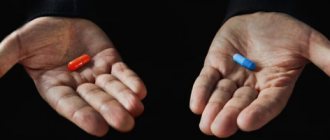- Home /
- Branches /
- Cardiology /
- Edema
11/01/2021 The article was checked by a cardiologist, member of the European Society of Cardiology, the Eurasian Association of Cardiologists, the Russian Society of Holter Monitoring O.A. Lozbineva. , is for general informational purposes only and does not replace specialist advice. For recommendations on diagnosis and treatment, consultation with a doctor is necessary.
When swelling is detected, specialists at the Yauza Clinical Hospital will conduct the most thorough diagnostics to determine its cause and, accordingly, prescribe treatment using pharmacotherapy, lifestyle correction, and water regimen.
- The volume of fluid inside cells may increase by 20–30% during edema caused by heart failure
- Edema becomes visible when more than 2–4 liters of fluid are retained in the body
- Timely treatment of edema not only improves well-being and appearance, but also prolongs the life of patients
sign up for a consultation
Edema is a symptom of various pathological conditions, which are characterized by excessive accumulation of fluid in the tissues and cavities of the body. To recognize swelling, you need to press for a few seconds on the front surface of the shin. In case of edema, a hole remains in this place, which does not disappear immediately.
Reasons for the development of edema
- Kidney diseases: glomerulonephritis, nephrotic syndrome, renal failure;
- heart diseases: heart failure,
- vein lesions (varicose veins, inflammation, thrombosis);
- liver diseases: cirrhosis of the liver, blockage of the hepatic veins;
- diseases of the endocrine system: hypothyroidism, diabetes;
- severe cancer;
- nutritional dystrophy;
- pregnancy;
- allergic reactions: insect bites, contact with an allergen.
Depending on the type, swelling can lead to retinal detachment, stroke, seizures, and even death. It is unacceptable to ignore the problem. To determine the cause of swelling, sign up for a consultation with specialists at the Yauza hospital.
Mechanism of occurrence
The disorder is based on changes in speed and efficiency of blood flow in the large and small circles.
The result of a decrease in myocardial contractility is a slow movement of connective tissue.
Stagnation in the veins leads to an increase in pressure and the release of the liquid fraction, plasma, into the intercellular space.
At its core, edema is an increase in the volume of soft tissue for a specified reason. Since the force of gravity acts strictly vertically, from top to bottom, the legs are the first to suffer.
As the pathological process progresses, the condition worsens, but this takes time. On average, the development of a complex disease takes from 2 to 6-7 years.
Peripheral edema also forms as a result of the further development of secondary pathological processes. Like kidney failure, liver dysfunction.
It is problematic to distinguish conditions from each other, especially in the later stages of cardiac decompensation.
The intensity of the symptom becomes higher, which indicates continued progression. Diagnostic measures, multiple ones, put an end to the question.
We treat all types of edema
Specialists at the Yauza Clinical Hospital diagnose and treat edema of various origins.
Edema in cardiovascular diseases
“Cardiac” edema develops slowly - over several weeks or months. They are characterized by symmetry and increase in size in the evening. They first appear on the lower extremities or lower abdomen, in severe cases they spread throughout the body and are accompanied by the accumulation of fluid in the abdominal cavity (ascites) and enlarged liver. In this case, the skin most often feels cold to the touch and the swelling is dense. When pressed, a hole remains.
Patients complain of shortness of breath, which worsens when lying down, and low exercise tolerance. They have wheezing in the lungs, tachycardia, pallor of the lips, and cyanosis of the nasolabial triangle. As circulatory failure is compensated, swelling decreases or disappears.
Swelling due to venous insufficiency also becomes more pronounced in the evening, causing the sensation of shoes suddenly becoming tight (due to swelling of the feet), and the legs become visually thicker, often asymmetrically. Swelling in the legs is accompanied by a feeling of heaviness, fatigue, and pain in the legs. Spider veins and an enhanced pattern of veins are noticeable on the skin. In severe cases, swelling persists constantly, cramps in the calves are possible, trophic changes develop - thinning of the skin, persistent redness, peeling, itching, and poorly healing ulcers. Timely professional medical care helps prevent or reduce the risk of such progression of the disease.
Edema due to kidney disease
“Renal” edema can develop very quickly - in less than a day. Swelling appears mainly on the face. Swelling under the eyes is noticeable in the morning. They can also be localized on the limbs and abdominal wall. When changing postures, bodies quickly shift. Fluid accumulation often occurs - ascites or hydrothorax. Edema skin is soft or dense, pale, dry.
Swelling due to kidney disease may be accompanied by a decrease in the amount of urine excreted, a change in its color, and possibly the appearance of blood (red blood cells) and protein in a urine test. Pain appears in the lumbar region. Nonspecific manifestations include headache and weakness. Shortness of breath and liver enlargement, characteristic of circulatory failure, are not observed. Renal edema can be a consequence of an infectious disease (tonsillitis, viral infection, etc.) and requires observation and treatment by a specialist (nephrologist, rheumatologist, therapist).
Allergic edema
Allergic edema develops quickly (in a few minutes) and is regional in nature. They arise as a result of contact with an allergen or an insect bite. They develop most often on the face (eyes, eyelids, mucous membranes, lips), arms (fingers, hands), elbows and knees.
The development of allergic edema is accompanied by itching and rash. In severe cases, due to bronchospasm, attacks of difficulty breathing are possible, usually in the exhalation phase. Swelling of the larynx can lead to suffocation and pose a threat to the patient's life. Therefore, patients prone to such a reaction should be prepared for a dangerous situation.
It is necessary to discuss in advance with the doctor what medications will help the patient safely wait for the ambulance to arrive (delivery to the hospital) in case of an acute allergy attack and always have them available.
Prolonged swelling causes stretching of the skin, makes blood vessels less elastic, and impairs blood circulation. Swelling negatively affects the joints and causes difficulty moving. Ulcers may develop at the site of swelling, which are subsequently difficult to treat. Don't take things to the extreme. Make an appointment with a doctor and get rid of the problem.
What is heart failure?
Heart failure is a pathological condition caused by the inability of the heart to provide adequate blood supply to organs and tissues during exercise, and in more severe cases, at rest. In heart failure, the heart is not able to effectively pump blood, and therefore the circulation of oxygen and nutrients in the body is disrupted, which leads to stagnation of blood in the tissues, swelling in the legs, in severe cases in the abdominal cavity (ascites), in the lungs . Heart failure is not an independent disease; it is considered a complication of other diseases and conditions. In the United States, heart failure affects about 1% of the population (2.5 million people). Heart failure accounts for one in 20 hospitalizations and is more fatal than many types of cancer. The incidence of heart failure increases with age—10% of the population over 75 years of age in the United States.
Diagnostic stages
- Consultation and examination by a therapist. After a detailed conversation and medical examination, the patient can be referred for consultation to other specialists depending on the etiology of the disease: cardiologist, allergist, endocrinologist, nephrologist, urologist, etc.
- Laboratory research. First of all, the following are carried out: general (with leukocyte formula) and biochemical blood tests;
- general urine analysis.
- ECG;
To effectively eliminate swelling, you need to know exactly what disease is causing it. Edema is not an independent disease, but a symptom. Diagnostics using modern equipment will allow us to determine the cause of the pathology. The information obtained allows the doctor to choose the most effective treatment. Don't put off taking care of your health until later. Schedule a consultation with your doctor today to stay energized for years to come.
sign up for a consultation
Diagnosis of heart failure
Electrocardiography (ECG) helps doctors identify signs of hypertrophy and insufficient blood supply (ischemia) of the myocardium, as well as various arrhythmias.
An ECG with a load - a special modification of a bicycle (bicycle ergometry) or a “treadmill” (treadmill) - provides information about the reserve capabilities of the pumping function of the heart.
Echocardiography (EchoCG). Using this method, you can not only determine the cause of heart failure, but also evaluate the contractile function of the ventricles of the heart.
X-ray examination of the chest organs in heart failure reveals stagnation of blood in the pulmonary circulation and an increase in the size of the heart cavities (cardiomegaly).
Radioisotope methods for studying the heart, in particular radioisotope ventriculography, make it possible to assess with high accuracy the contractile function of the ventricles of the heart and the volume of blood they contain in patients with heart failure. These methods are based on the administration and subsequent distribution of radioisotope drugs in the body.
Positron emission tomography – PET – allows using a special radioactive “tag” to identify areas of viable myocardium in patients with heart failure.
Treatment of edema
Treatment of edema is carried out in accordance with the cause of its development. Here are some general recommendations.
- You should limit your fluid intake to 1.5 liters per day, and sometimes less.
- You also need to reduce your salt intake to 1–1.5 g per day.
- Diuretics should be taken only under the supervision of a doctor who monitors the patient’s condition and monitors the level of electrolytes in the blood. Diuretics can lead to a decrease in potassium levels in the body, so it is recommended to eat dried apricots, raisins, rice, baked potatoes and other foods rich in this trace element.
For cardiovascular diseases, a cardiologist, after diagnosing “cardiac” edema, selects therapy to maintain a stable state of the vascular system. A patient with heart failure should visit a cardiologist regularly throughout his life. In case of venous insufficiency, conservative or surgical treatment is carried out by a vascular surgeon-phlebologist.
If the swelling is caused by kidney disease , in addition to relieving the swelling, the doctor (therapist or nephrologist) prescribes therapy for the underlying disease, which may include antibiotics, anti-inflammatory hormonal drugs, etc.
In case of allergic edema , which is accompanied by difficulty breathing, urgent medical attention is required. Before help is provided, you should take an antihistamine, if the condition is severe - prednisolone or dexamethasone. In case of an attack of suffocation of an allergic nature, take 1-2 breaths from an inhaler recommended by your doctor (allergist).
Treatment
Therapy is carried out as part of a complex intervention. There is no point in removing only swelling, they themselves do not pose a danger. The threat comes from heart failure.
Elimination of the root cause is medicinal. Surgical intervention is required for the correction of defects: anatomical defects such as insufficiency of the tricuspid, aortic or mitral valves, and other conditions.
Main drugs and their groups:
- Cardiac glycosides. They enhance the contractility of the myocardium, adjust the volume of blood entering the systemic circulation, and restore tissue nutrition. Digoxin or lily of the valley tincture.
- Mild diuretics with an antagonistic effect on aldosterone. Spironolactone or Veroshpiron (analogues). Remove excess fluid and prevent vasospasm. Indirectly affect the concentration of angiotensin-II and renin.
- Beta blockers in the early stages to eliminate tachycardia. ACE inhibitors are prescribed for the same purpose.
Treatment of swelling of the legs as such or relief of the symptom is carried out with the help of diuretics. With intense manifestations, more active medications are used, such as Furosemide.
Surgical treatment, as stated, is carried out according to indications. If there is a heart defect, an anatomical defect of the vessel.
An approximate list of diseases includes: aneurysm of the wall of a muscular organ, aorta in any part, insufficiency of the tricuspid, mitral valves, septa, and others.
Preference is given to minimally invasive interventions, with endovascular access (through the femoral artery).
The pathological process that causes edema requires lifelong correction of habits, regardless of the stage of insufficiency.
The recommendations are simple, you need to follow the rules of common sense:
- Give up cigarettes, alcohol, especially drugs.
- Do not take medications unless prescribed by a specialist. Particularly dangerous or cardiotoxic are anti-inflammatory drugs of non-steroidal origin (the absolute record holder is Diclofenac, which has been repeatedly proven), oral contraceptives, antibiotics, antiparasitic medications and others.
- Sleep at least 7 hours during the night. Approximately a quarter of the period should occur before 22.00.
- Limit the amount of fat in your diet, consume less table salt (no more than 7 grams per day).
- Try not to sit in one place all the time. Physical inactivity only aggravates congestion in the body, including reducing the speed of blood flow.
If you have a tendency to varicose veins, the condition will get worse. You need to move, walking in the fresh air is suitable. You cannot overexert yourself, this is fraught with complications, including cardiac arrest.
- Drink 1.5-1.7 liters of water. More is excess load. Possibly less, depending on the general health of the person. According to indications, the volume is reduced.
It is also important to avoid stress. Master relaxation techniques and, if necessary, consult a psychotherapist to correct the status using non-drug methods or using light sedatives based on medicinal herbs.
Swelling of the legs due to heart failure should be treated under the supervision of a cardiologist. As part of extended therapy at advanced stages - a whole council of specialists.









